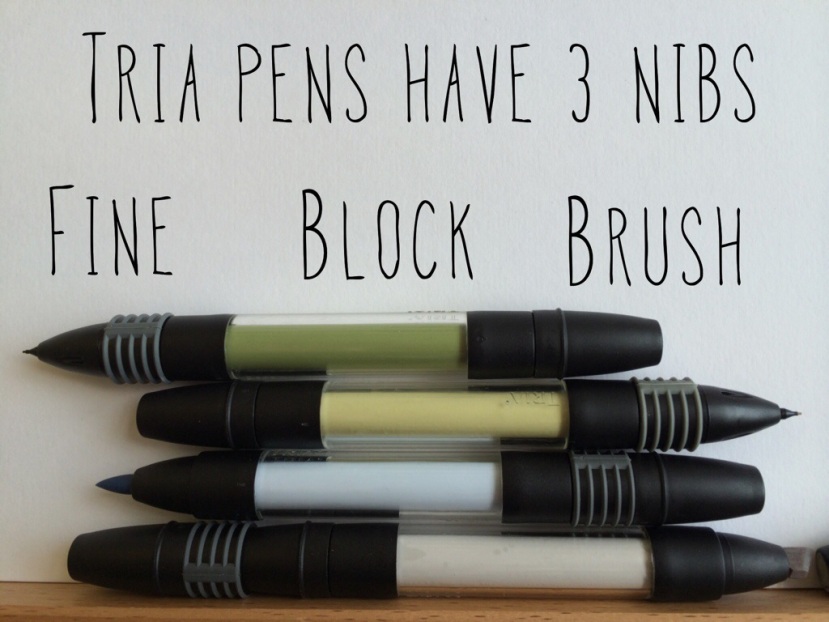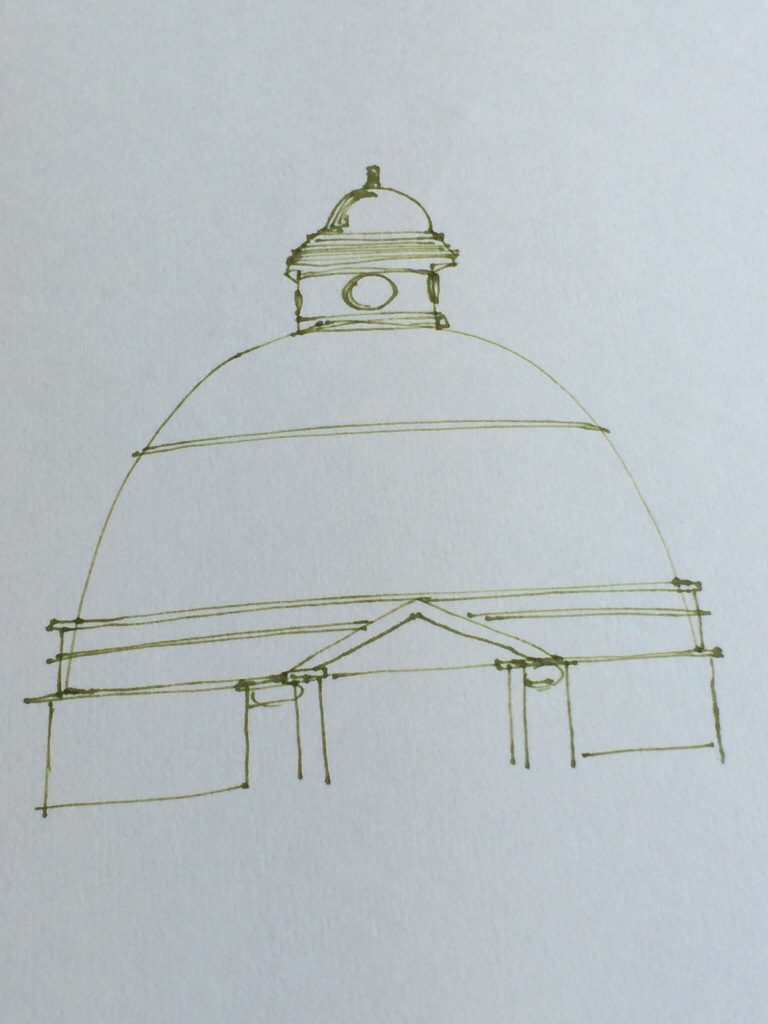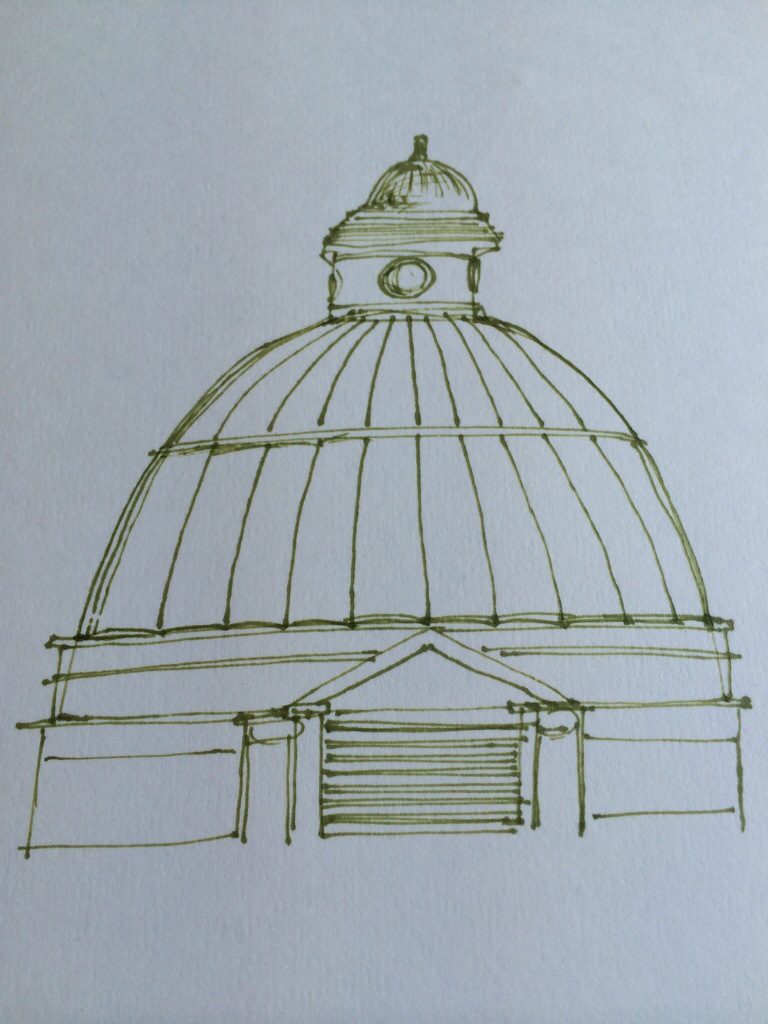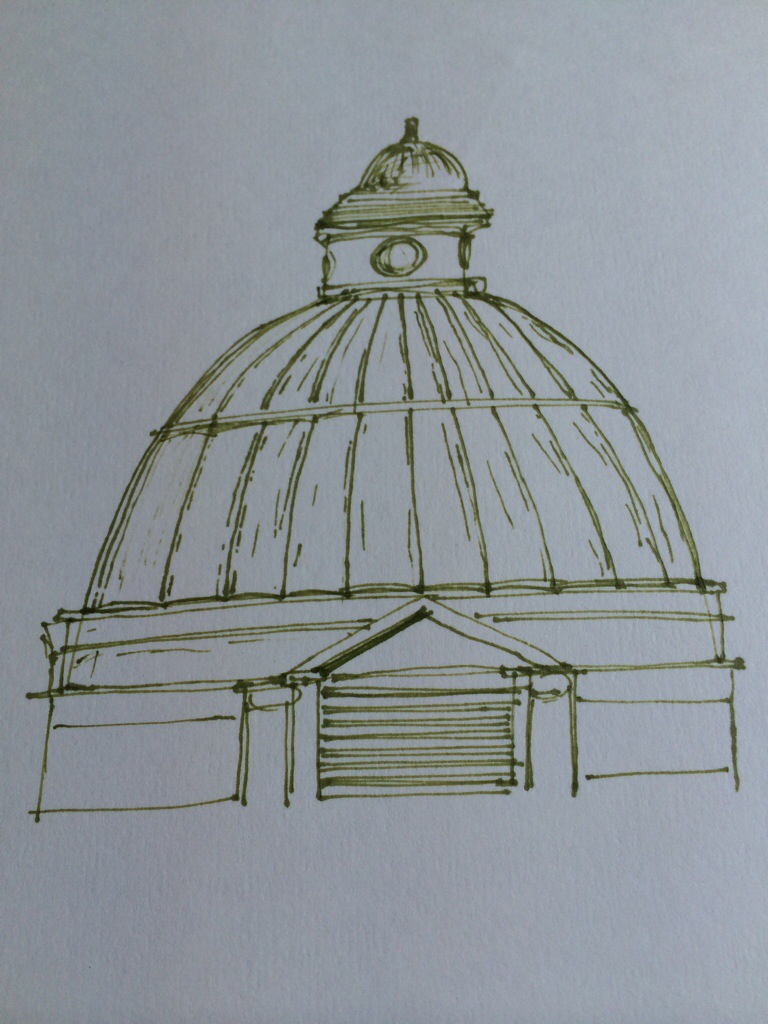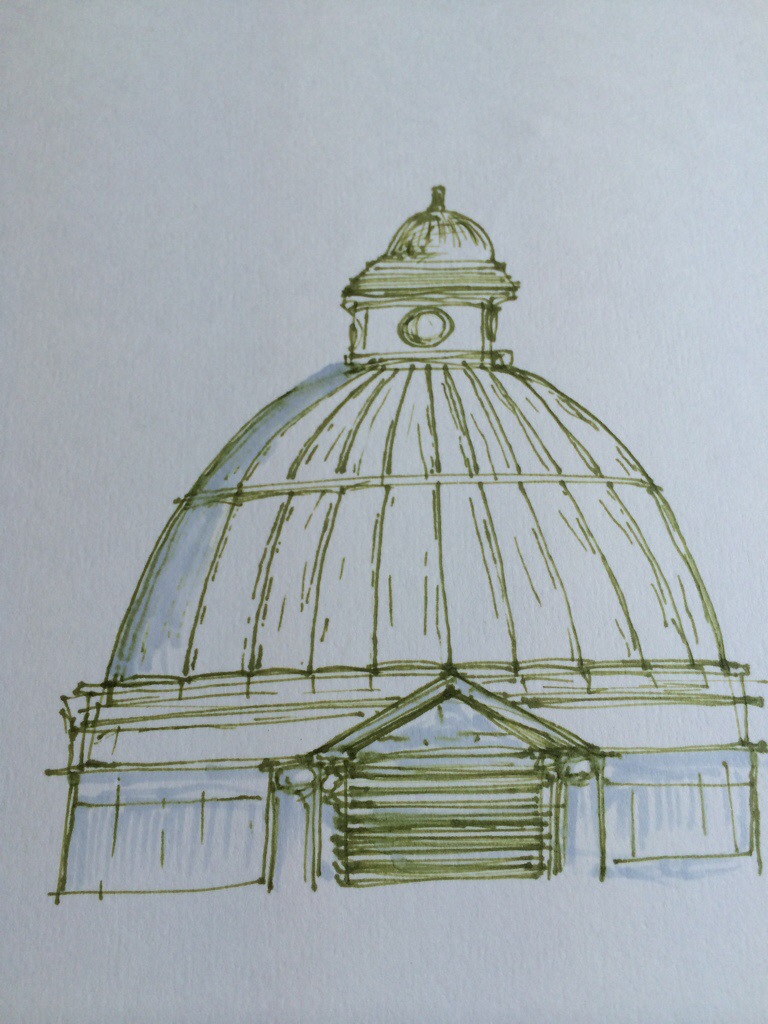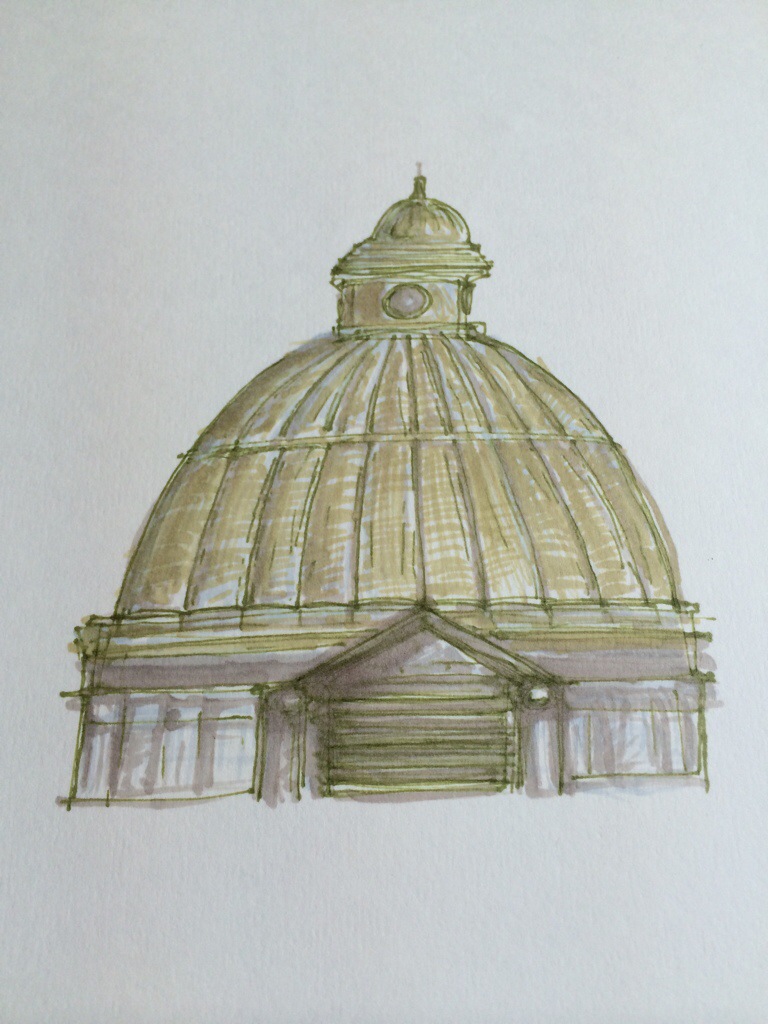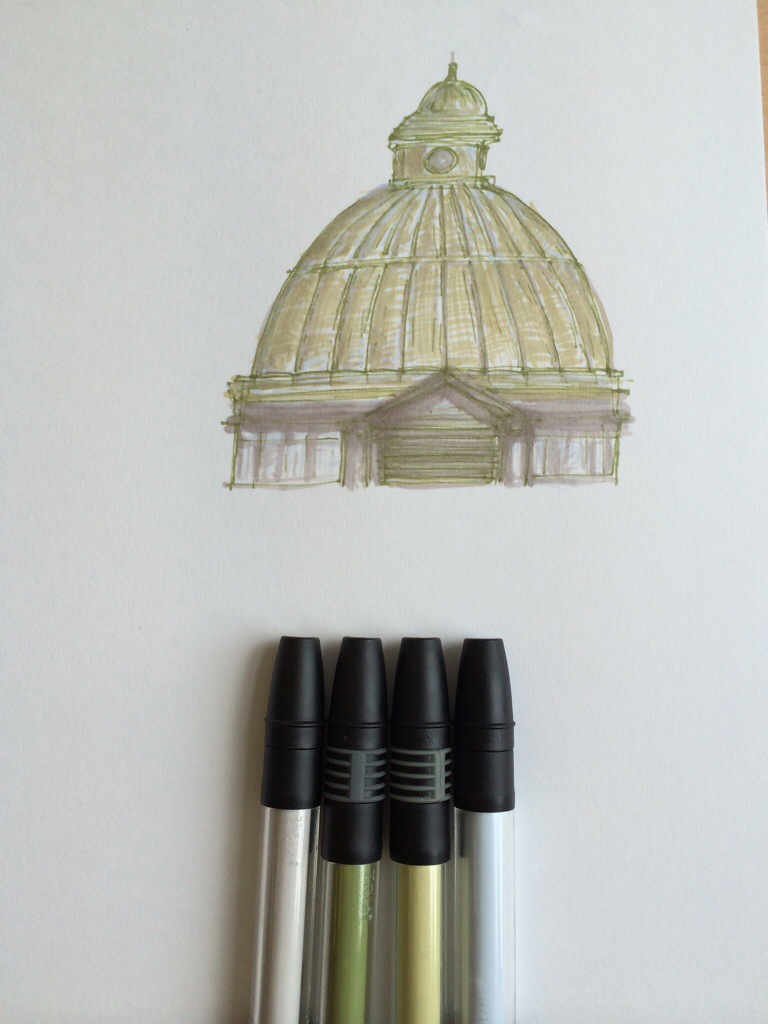Tagged: architecture

Drawing a roofscape in Letraset Tria pens
I have been experimenting with new art materials and very much enjoying the effects which one can achieve by using Letraset pens. I fondly remember the Letraset brand as something which involved lots of rubbing and transfers to make beautiful (if often wonky, given uncareful placement) words and phrases. I also remember trying to make a local plan diagram from rubbing patterned Letraset, it made trees and everything! You can still buy such goodies, but they are perhaps not such a prominent tool in many designer or technicians tools now that computers can do the same thing. One day I will make a “retro” plan illustration with these, just because it’s still possible. The town planner in me has always been creative, the creative in me has always sought out socially aware , useful and enjoyable outlets for my work!
The tria pens come in lovely boxes, there is an “architecture” set which I was kindly given a gift of time ago. I was almost scared to use them because they are so beautiful. Pens are, however, designed to be loved and used… And I have been experimenting with the older pens and some recent acquisitions.
The view from my studio has a particularly nice dome in sight, which as someone who revels in architectural drawing is a challenge begging to be explored. I usually go for black sketching pen and then a watercolour lining, but today the Letraset pens were beckoning.
Materials:
Daler-Rowney smooth cartridge paper (at least 150 gsm)
Letraset Tria- G136, Y516, WG07 and C919
Method:
Start out with an outline drawing of the dome in the lift green colour. This may seem an unconventional choice for line drawing, but as the dome is constructed with copper, which has taken on a patina or age over time, the green reflects this tinge. Concentrate on the symmetrical appearance, but a little artistic licence won’t disturb the overall affect here and there (this is a freehand representation, drawn with love, not a “to scale” model after all).
Add the lines for the dome construction, forming the individual sections of the dome
Continuing to use the fine nib, press lightly to imply structure and form, adding short dashes of line to the dome.
Use the more blue coloured C919 marker to add tones of leadwork to the base of the dome, including the triangular pediment. Lead has different Material properties and is often laid in sheets; reflect this in the lines you use.
Having added more structure to the drawing, it is time to add shadow. Use the brush end of the same pen to add wider swoops of colour, implying shadow.
Continue adding colour, noticing the angle of the shadows. The next stage is to use an alternative colour, Y516, to add a more realistic colour and start to define each part of the structure. The copper is slightly curved on the dome; add lines with the fine tip to imply curved areas. The dome is a greener colour than the lead below, so the new colours reflect this. Occasional areas of brush can be used to add shadow.
Use the last pen (brush tip) to emphasise any areas of shadow and continue tinkering until you are happy.
That’s it!
Part 2 of this entry is ” make it digital”…
Fun at the festival of museums
This weekend it has been the Festival of Museums throughout Scotland (and Museums at Night throughout the UK). We had a great time yesterday (May 17th) on an architectural art bus tour organised by the Glasgow Gallery of Modern Art, and hosted by Dress for the Weather architects. There is currently an exhibition at GOMA by Nathan Coley, using the architectural form of places of worship in Edinburgh to form a dramatic model landscape, our tour was inspired by this and we visited two religious buildings in the South Side of Glasgow (Glasgow Gurdwara and Govan Old).
I have included a taster of some of the sketches and models in the video, but I am looking forward to seeing them all on display in GOMA together.
Artist Call: experimental, participatory or collaborative practice
Artist Call: experimental, participatory or collaborative practice.
I saw this today and think it is a wonderful idea. Built environment and urban change from a suitcase!

Celebrating World Heritage Day
Today is World Heritage Day, a day organised by UNESCO to celebrate global international heritage. This got me thinking about places which I have enjoyed visiting which have an official world heritage site designation (individual country designations can be seen on the UNESCO website)
I compiled a Flickr set of photos from visits in the last year or so, including UK and Indian sites.
How to escape a cyberman
One of the most amusing Doors Open Day tours I did was of the BBC Scotland building in Glasgow when there was a Dr. Who contingent in residence. Being within arms length of a cyberman is enough to terrify even the biggest of weans. The building was something we had seen from outside many times, but only seen inside “on the telly”. The tour allowed us to see the famous thinking sheds, the view from the roof and also the stepped steel and stone interior which is sometimes used for interviews. We also learnt that cybermen appear not to be able to look up!.
Staring at diamonds
On a recent visit to St. Annes on Sea my mum and I spent an extraordinary amount of time staring at little metal triangles and diamonds. Why?!? Well, if you look closely you can see the mark of a Glasgow architectural metalwork firm on this seaside shelter. This makers mark confirms that a little bit of the West of Scotland has travelled to the North West of England. For a cultural planner and architectural tourist such as myself, a lovely treat to see a set of bandstand, pavilion, drinking fountain and shelter all in a row. I have also seen this ironwork as far away as Darjeeling in India, and as close as Dumfries where beautiful fountains can be seen, adorned with cherubs, animals and plants (and even full size walruses in the case of Paisley Grand Fountain!). Happy iron spotting!
December 16th unconventional advent calendar
Today’s unconventional advent calendar celebrates archives and the release of over 1 million images owned by the British Library on Flickr.
I previously blogged about the Glasgow image I found, but there are literally millions to see, from all over the world! You can also add tags to any of the images yourself, and use the usual “favourite” tool in Flickr which will make it easier for you to re-find what you’re after again.
Some of my favourites are below, this time with a tourism and transportation theme… for cultural planners this is an amazing research resource.
![Image taken from page 233 of '[Our own country. Descriptive, historical, pictorial.]'](https://i0.wp.com/farm4.staticflickr.com/3669/11306724805_676b4fc010.jpg)
For previous unconventional advent calendar entries see this link.
British Library Flickr images

Image taken from page 595 of ‘Le Monde pittoresque et monumental. L’Angleterre, l’Écosse et l’Irlande … Cartes en couleur et … gravures’, a photo by The British Library on Flickr.
I have been browsing the new Flickr resources from the British Library, some wonderful things on there, including this great image of Trongate in Glasgow’s Merchant City.
Unstable buildings and cultural festivals
Today’s unconventional advent calendar is very unconventional indeed as it is long weekend of cumulative entries. I may well devise some bonus content later for those of you who might have missed the last two days of usually daily pics and musings.
I was taken by the art featured in the calendar as someone who endeavours to unite art and planning issues; often we find ourselves working with various people who have ideas for new uses for buildings where the previous use has for some reason ceased, and unfortunately there are a lot of examples of buildings which are at risk due to continual neglect and decay. From a cultural planning point of view these can also present themselves as opportunities as well as problems, there are many innovative examples of property re-use and reimagination. Our towns and cities are constantly changing, instability can mean an area reinvents itself in various ways. The Liverpool biennial is the largest contemporary arts festival in the UK (see website), and when I first visited in 2008 the city was the European capital of culture. Interestingly, Liverpool and Liverpool John Moores Universities devised a methodology for assessing the impact of cultural festivals (download here), covering cultural access, economy and tourism, cultural vibrance and sustainability, image and perceptions and governance and delivery.
Previous entries for the unconventional advent calendar can all be seen on the UWS Cultural Planning blog where a community of cultural planning practitioners doing the 2013 short course are recording and sharing their reflections and thoughts.
Gdansk to Govan
Today’s unconventional advent calendar is a visit to Poland, where I recently had the fortunate opportunity to take a study tour based around the shipyard area. How would you show people around your own area on a cultural planning tour?
I have been thinking about the similarities and differences between Gdansk and Govan, reflecting on this in a photographic manner. I used photographs taken whilst on the study tour, but also older images which I had from 2009 (taken from the Glasgow science tower) and I gave a presentation on this today at the University of the West of Scotland Ayr campus, copied below.
